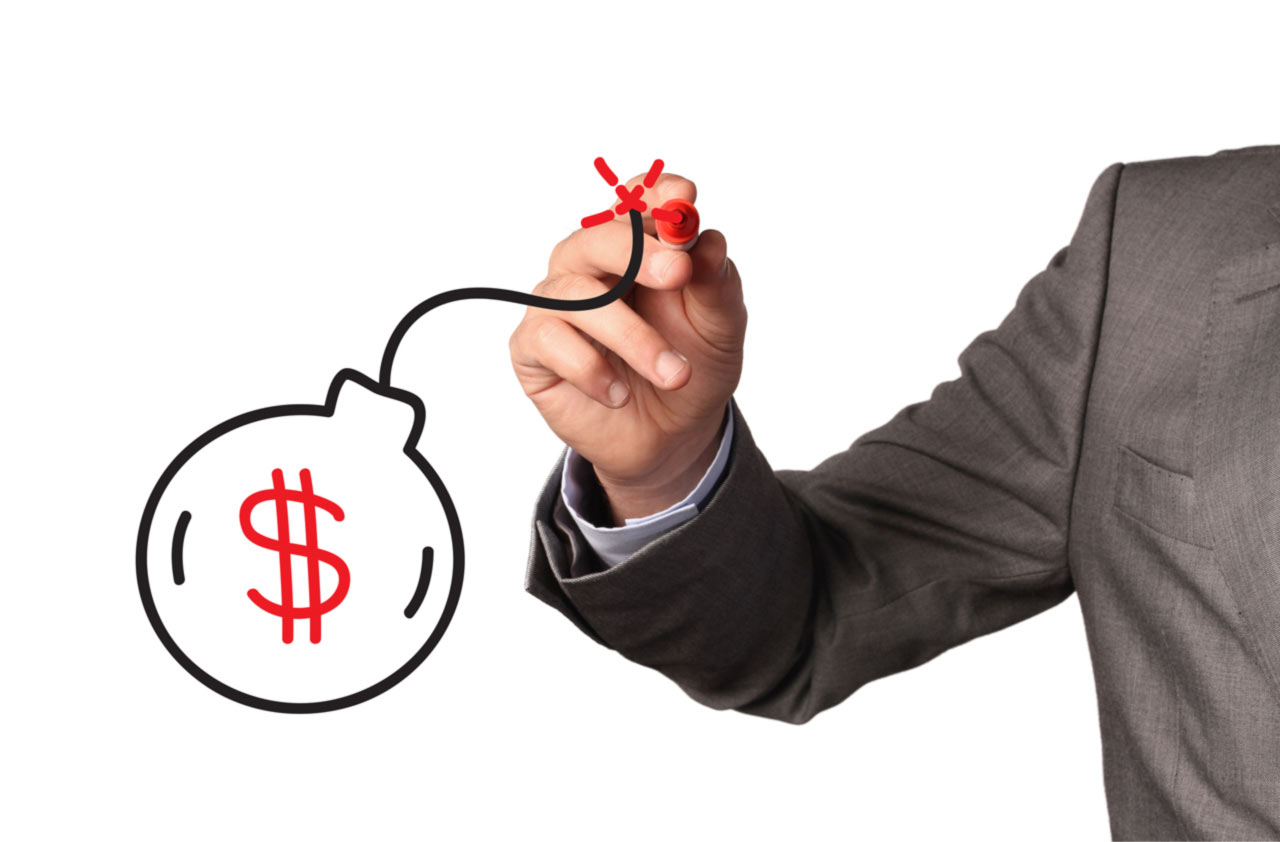Now Is the Time to Fend Off Problems With Your 401(k)-Focused Nest Egg
Tick, tick, tick. That's the tax time bomb on your 401(k) and IRA, quietly counting down. Here's how to defuse this explosive situation.


If you work for a company that still offers a pension, you’ve probably been told many times how lucky you are.
If you don’t and instead have a 401(k) or 403(b) through your employer, you may have realized by now that you may need to create your own luck. It’s up to you to help grow that money and then make it last through your retirement, and that’s no easy concept.
That wasn’t quite so obvious back in the early 1980s, when defined-contribution plans first came on the scene, and then later, when they began replacing defined-benefit plans.
From just $107.88 $24.99 for Kiplinger Personal Finance
Become a smarter, better informed investor. Subscribe from just $107.88 $24.99, plus get up to 4 Special Issues

Sign up for Kiplinger’s Free Newsletters
Profit and prosper with the best of expert advice on investing, taxes, retirement, personal finance and more - straight to your e-mail.
Profit and prosper with the best of expert advice - straight to your e-mail.
An Early Love Affair with 401(k)s
Though most workers would have preferred to keep their pension while adding a 401(k) as a separate perk — as some companies still do — the idea of having control over one’s own assets, with the potential to amass more wealth, has always been appealing. Plus, there was the enticement of the employer match, often touted as “free money.”
Workers were encouraged to start contributing to their 401(k)s as early as possible and to contribute as much as they could, and many did. It was easy, thanks to payroll deductions, and people liked that they didn’t have to pay taxes on that income — especially if they were high earners in a high tax bracket.
A Looming Tax Issue Later
But people seemed to forget they will owe some of that money to the IRS. They just keep letting those tax-deferred accounts grow, ignoring the fact that someday they’ll have to pay taxes on their contributions and earnings.
Those who do think about the tax aspects mostly assume that when they retire, they’ll have fewer expenses and less need for income, thus a lower tax rate than when they worked. That’s the conventional wisdom.
It hasn’t quite worked out that way, though. Unlike their parents and grandparents, who thought of retirement as a time to wind down and spend less, the Baby Boomers retiring now have no intention of slowing down. They don’t want to downsize their lifestyle; they want to add to it with travel, hobbies, concerts, dinners out, boats and vacation homes.
Which means that when they retire, many Baby Boomers need the same income or more, not less, and they end up in the same tax bracket or a higher one.
Worried About the Wrong Thing
I meet 401(k) investors who are worried about asset allocation and portfolio diversification every time the market goes up or down. What they don’t seem to consider when they look at their monthly statements is asset location and tax diversification.
Instead of separating their money into three tax buckets — one that’s taxed-deferred (IRAs, 401(k)s, 403(b)s), one that’s taxable (brokerage and bank accounts) and one that’s tax-free (Roth accounts and indexed universal life insurance) — they tend to keep almost all their wealth in the tax-deferred bucket. As a result, taxes are quietly eating away at their hard-earned nest egg.
And now, as the oldest Boomers are getting into their 70s, they’re also finding out about the impact that required minimum distributions (RMDs) can have. They feel as though they’ve been put in tax handcuffs — forced to withdraw and pay taxes on money they might not even need.
We’re actually starting to see people in their 70s who are paying more in taxes than when they were in their 60s. And they aren’t happy about it. This savings tool that was supposed to help workers build a better retirement could potentially jeopardize their lifestyle if they haven’t put a tax plan in place.
Take a Pre-Emptive Strike Now to Solve the Problem
There is a way to unwind the problem, however, and as with so many aspects of retirement planning, it’s all about timing.
Once you hit age 59½ and can access those funds without a penalty, it can make sense for 401(k)-focused savers to start shifting tax-deferred money to the tax-free bucket by converting some of it to a Roth IRA and/or indexed universal life insurance.
There’s no time like the present to get it done. Here’s why:
- If you retire entirely on taxable and tax-deferred income, you’ll be subject to the changes of the government. Many of the reforms passed in 2017 will sunset in 2025. It’s likely the government will raise tax rates at that point — if not sooner, if there’s a change in the administration.
- You also might lose some tax deductions in the future. We lost several deductions with the 2017 reform, and that could happen again. Most people also lose deductions as they age: when they pay off their home, their kids grow up and move out, or when one spouse dies.
- The government might tax more things. It’s pretty clear that there’s going to have to be some kind of Social Security reform in the future, and one answer could be to raise taxes.
I often ask the people I see, “In your heart of hearts, do you think taxes will be higher or lower 15 to 20 years from now?” Everybody says higher.
If that’s your expectation, why would you want all that money and growth in your tax-deferred bucket? Why wouldn’t you look at doing some tax planning now?
The Bottom Line for Your Plan
Even if you’re younger than 59½, you can do something to keep from paying more later. I encourage everyone to contribute to the employer match on their 401(k), but to also take advantage of today’s lower tax rates with a Roth IRA or Roth 401(k). You’ll pay taxes on your money on the front end, but once it’s in your account, the money will grow tax-sheltered. Then at retirement, qualified withdrawals will come out tax-free.
I come from Wisconsin, and there are lots of farms up there, so I’ll go with the old analogy that it’s usually smarter to pay taxes on the seed than the harvest.
If you’ve been carefully tending the money in your 401(k), you’ve likely watched it grow over the years. Don’t let it get away from you in retirement. Keep making your own luck and keep taxes in mind as you move forward.
Investment advisory services offered only by duly registered individuals through AE Wealth Management, LLC (AEWM). AEWM and Heise Advisory Group are not affiliated companies. Neither the firm nor its agents or representatives may give tax advice. Individuals should consult with a qualified professional for guidance before making any purchasing decisions. Heise Advisory Group is not affiliated with the U.S. government or any governmental agency. 614438
Kim Franke-Folstad contributed to this article.
The appearances in Kiplinger were obtained through a PR program. The columnist received assistance from a public relations firm in preparing this piece for submission to Kiplinger.com. Kiplinger was not compensated in any way.
Profit and prosper with the best of Kiplinger's advice on investing, taxes, retirement, personal finance and much more. Delivered daily. Enter your email in the box and click Sign Me Up.

Ken Heise is co-founder and president of the St. Louis-based Heise Advisory Group (www.heiseadvisorygroup.com). He is an Investment Adviser Representative and a Registered Financial Consultant, a designation awarded by the International Association of Registered Financial Consultants to advisers who meet high standards of education, experience and integrity.
-
 Stocks Struggle Ahead of November Jobs Report: Stock Market Today
Stocks Struggle Ahead of November Jobs Report: Stock Market TodayOracle and Broadcom continued to fall, while market participants looked ahead to Tuesday's jobs report.
-
 7 Dr. Seuss Quotes Retirees Should Live By
7 Dr. Seuss Quotes Retirees Should Live ByYou're off to great places! Why Dr. Seuss is the retirement guru you didn't know you needed.
-
 Fed's Rate Cuts Could Have Impacts You Might Not Anticipate
Fed's Rate Cuts Could Have Impacts You Might Not AnticipateUnderstanding how lower interest rates could impact your wallet can help you determine the right financial moves to make.
-
 Past Performance Is Not Indicative of Your Financial Adviser's Expertise
Past Performance Is Not Indicative of Your Financial Adviser's ExpertiseMany people find a financial adviser by searching online or asking for referrals from friends or family. This can actually end up costing you big-time.
-
 I'm a Financial Planner: If You're Not Doing Roth Conversions, You Need to Read This
I'm a Financial Planner: If You're Not Doing Roth Conversions, You Need to Read ThisRoth conversions and other Roth strategies can be complex, but don't dismiss these tax planning tools outright. They could really work for you and your heirs.
-
 Could Traditional Retirement Expectations Be Killing Us? A Retirement Psychologist Makes the Case
Could Traditional Retirement Expectations Be Killing Us? A Retirement Psychologist Makes the CaseA retirement psychologist makes the case: A fulfilling retirement begins with a blueprint for living, rather than simply the accumulation of a large nest egg.
-
 I'm a Financial Adviser: This Is How You Can Adapt to Social Security Uncertainty
I'm a Financial Adviser: This Is How You Can Adapt to Social Security UncertaintyRather than letting the unknowns make you anxious, focus on building a flexible income strategy that can adapt to possible future Social Security changes.
-
 I'm a Financial Planner for Millionaires: Here's How to Give Your Kids Cash Gifts Without Triggering IRS Paperwork
I'm a Financial Planner for Millionaires: Here's How to Give Your Kids Cash Gifts Without Triggering IRS PaperworkMost people can gift large sums without paying tax or filing a return, especially by structuring gifts across two tax years or splitting gifts with a spouse.
-
 'Boomer Candy' Investments Might Seem Sweet, But They Can Have a Sour Aftertaste
'Boomer Candy' Investments Might Seem Sweet, But They Can Have a Sour AftertasteProducts such as index annuities, structured notes and buffered ETFs might seem appealing, but sometimes they can rob you of flexibility and trap your capital.
-
 Quick Question: Are You Planning for a 20-Year Retirement or a 30-Year Retirement?
Quick Question: Are You Planning for a 20-Year Retirement or a 30-Year Retirement?You probably should be planning for a much longer retirement than you are. To avoid running out of retirement savings, you really need to make a plan.
-
 Don't Get Caught by the Medicare Tax Torpedo: A Retirement Expert's Tips to Steer Clear
Don't Get Caught by the Medicare Tax Torpedo: A Retirement Expert's Tips to Steer ClearBetter beware, because if you go even $1 over an important income threshold, your Medicare premiums could rise exponentially due to IRMAA surcharges.